Chojubai, a variety of dwarf flowering quince, is one of the few bonsai I can repot in summer. Repotting chojubai in early spring also works, but by repotting now I can get a jump on the upcoming repotting season.
Chojubai can be repotted with or without defoliating first, but I prefer to defoliate as most of the old leaves fall off after repotting (see “Repotting young chojubai” for details).
July and August are good times to repot chojubai where I live as we have warm weather in summer and fall which gives the trees a chance to produce new roots before winter.
Here are some of the chojubai to be repotted. The first step is to remove the foliage.
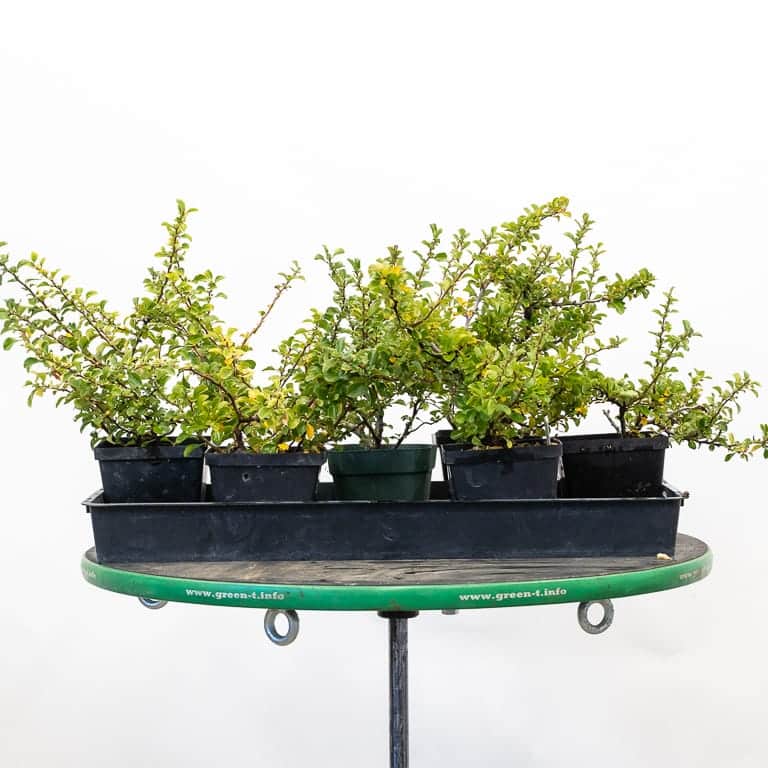
4″ chojubai
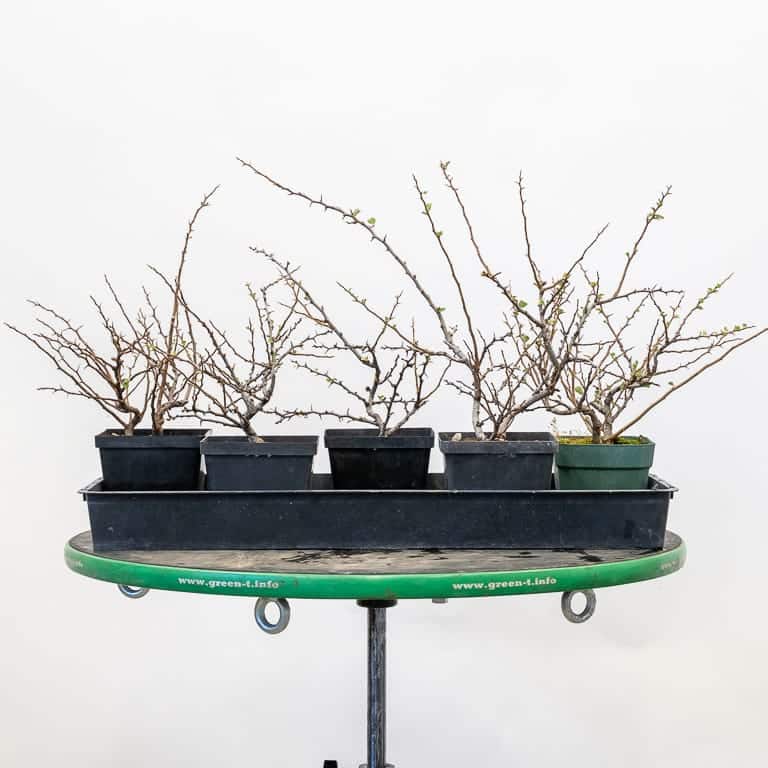
After defoliating
To get a better sense of how chojubai respond to summer work, I pruned some of the trees and left others alone. Here’s one of the plants I pruned.
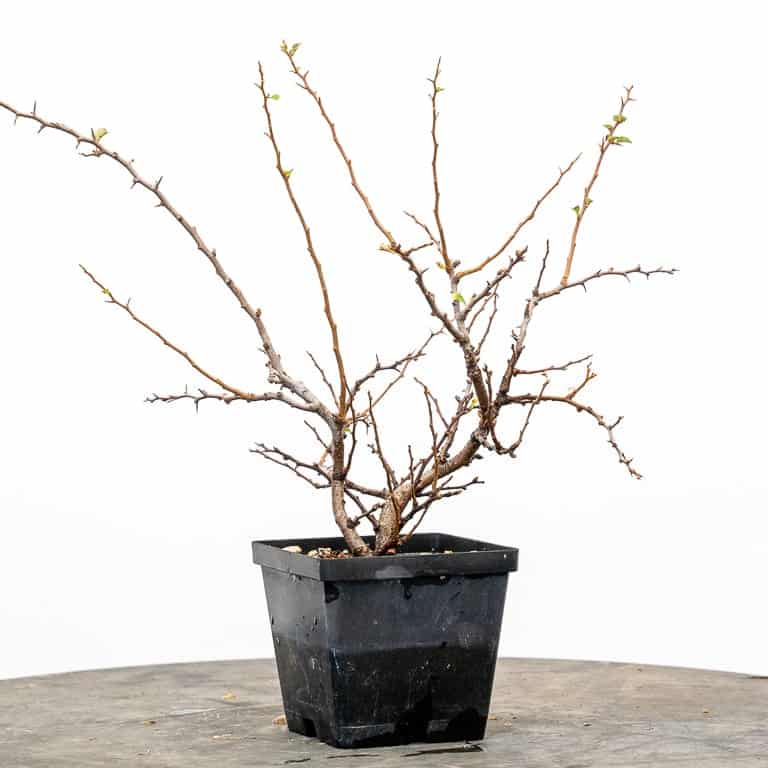
Chojubai before pruning
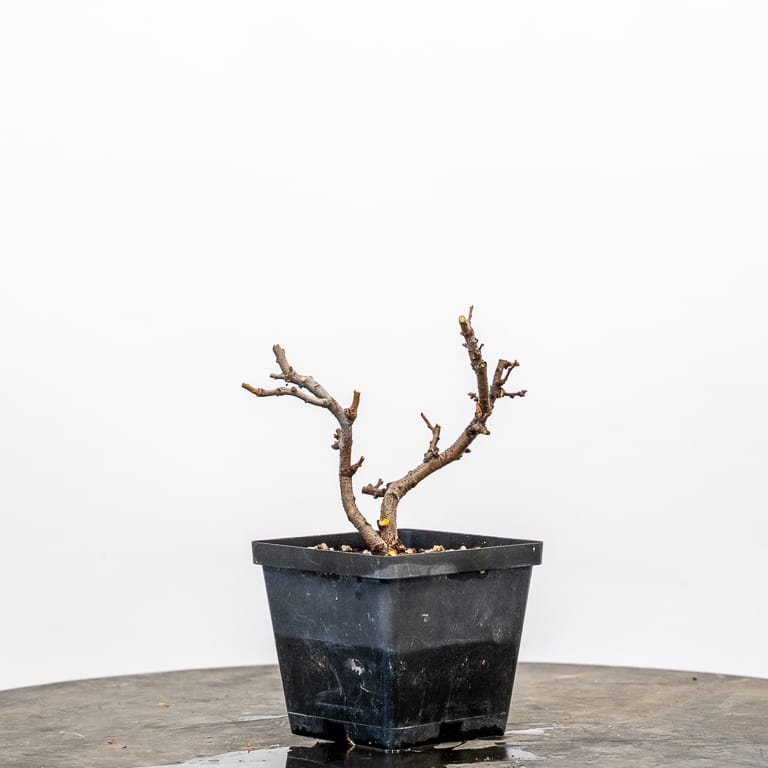
After pruning
I planted the smaller chojubai in three or four inch plastic pots.
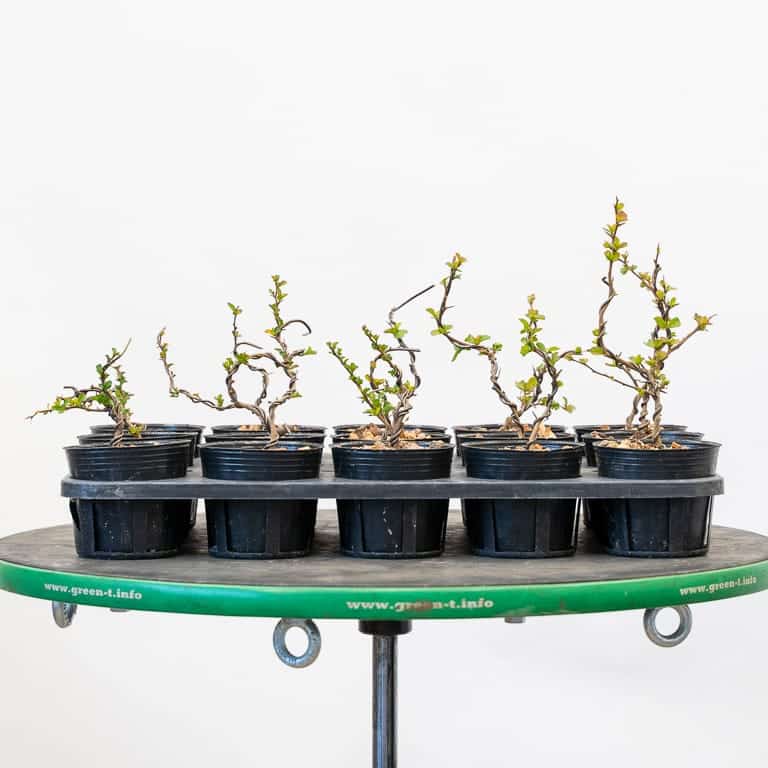
Chojubai in 3″ pots – one week after repotting
The larger chojubai went into 8″ colanders with risers made from loops of drainage screen. Using the loops of drainage screen effectively makes the colanders taller so I don’t have to cut additional roots to make the trees fit.
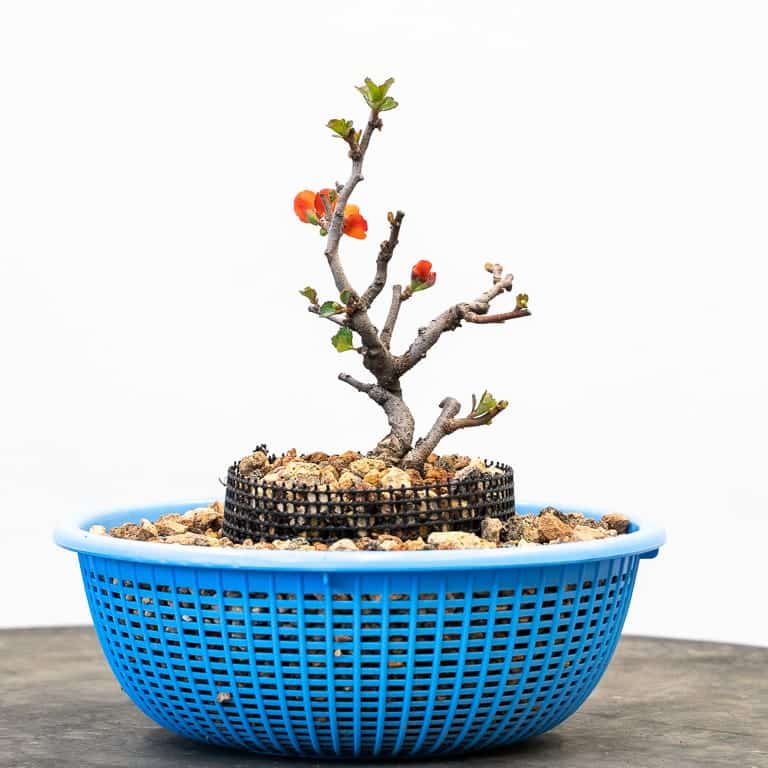
Chojubai in 8″ colander
As you can see in the last two photos, the chojubai leafed out within days after repotting. I hope to learn whether or not pruning at this stage makes a difference, so I’ll track these trees through fall and winter and report back if I notice any patterns.
Subscribe to Bonsai Tonight
New Posts Delivered Every Tuesday and Friday
Ron Davis says
Thanks for all your posts, Jonas, they are very helpful.
I’m amusing the rationale for using colanders instead of sold pots is increased drainage and air circulation. Anything else? I live in Montana where the humidity is much lower than the Bay area. Would plants in colanders dry out too quickly here?
Jonas Dupuich says
Thanks, Ron! That’s a great question about the humidity. Colanders can work in lower humidity areas, but they may need more frequent watering, and smaller soil particles may also help. As you noted, the increased drainage and air circulation provide root pruning which can create fine root masses.
If you find you’re having to water the colanders too much, they may be a better fit for species that need less water (e.g. conifers).
Another thing to try would be larger colanders or stacked colanders so the trees don’t dry out so fast.
Mirko says
Ottimo si inizia una nuova fase di coltivazione :). Ho iniziato anche io lo stesso metodo grazie mille
Jonas Dupuich says
Thanks, Mirko! I hope the approach works well for your trees – do let us know how it goes!
Kale says
More great info! Thanks! The one I have seems to have a similarly sized trunk as all yours and you don’t see many thick ones. I have it in a larger pot trying to grow it thicker but starting to think that is a wasted effort. Do you think I should just prune away and go for shohin size? They seem to be a whole different ball of wax..
Jonas Dupuich says
Thanks, Kale! I think you should go for whichever style sounds best to you. It is hard to develop chojubai with thick trunks and it will take a while. Also, thick trunks on chojubai aren’t “thick” like the trunks on trident maples or Chinese quince, but they can make nice informal upright bonsai.
Robert Miller says
Your presentation with photos makes it much easier to visualize what you are doing. In this case, it helps the reader appreciate the extent of the cutback. The tendency is to be too timid with the trees. Well done and thank you.
Jonas Dupuich says
Thank you Robert! I cut some down to 1″ tall and most are still growing. Will report on the results in a season or two.
Robert says
Thank you for another great lesson!
I am in Atlanta GA and we are still experiencing 85F+ days and it is going to last for another week before the highs drop below 80F. We don’t really get freezing temp until late December or early January. Should I hold off on repotting mine until the temp drops below 80F? Also, what is the after care for summer repotting? Do you keep them in shade for a few weeks?
Thank you for sharing your experience. I read the Little book of bonsai and it was a very interesting!
Jonas Dupuich says
Thanks, Robert! It was in the 80s here when I repotted the quince, and it got up near 100 a few days later. So far they have done well. To be on the safe side, you can protect the trees from afternoon sun after repotting if the temps get over 85-90 degrees. Depending on how many you have, you might leave some in the sun to see how they do.
If your chojubai is mature, I might wait until spring as I don’t have as much experience with repotting refined chojubai in summer.
Douglas Adams says
What are you feeding with after reporting? I just did a whole group with Mark Fields today.
Jonas Dupuich says
I use a variety of fertilizers throughout the year. This year I’ve been using primarily fish emulsion and DynaGro.